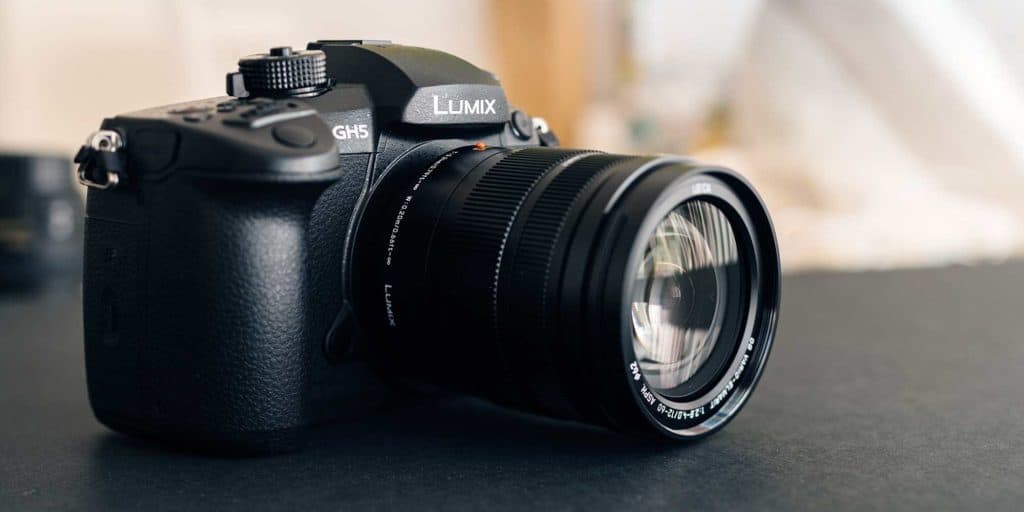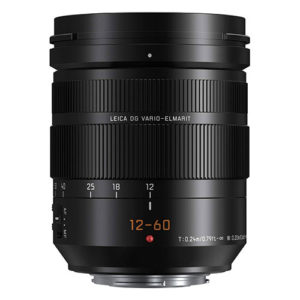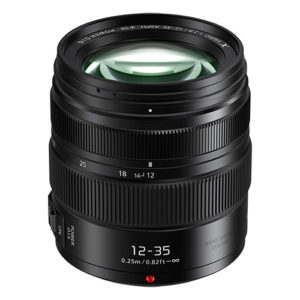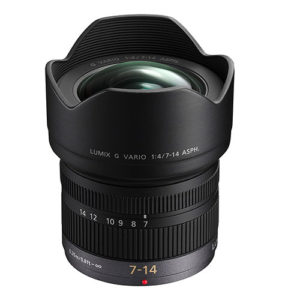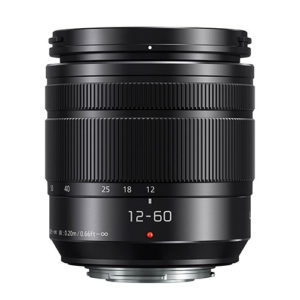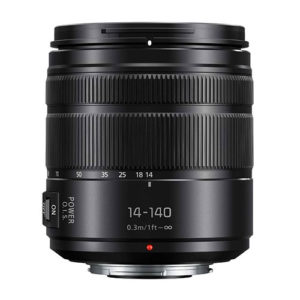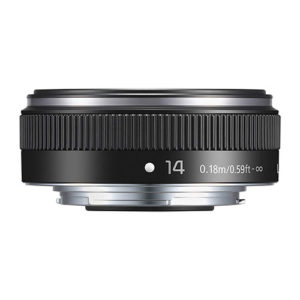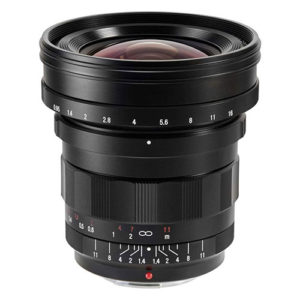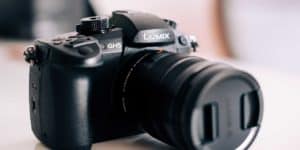Micro Four Thirds format cameras, like the Panasonic GH5, are ideally suited for travel photography.
Its small and lightweight frame means that it carries easily anywhere and everywhere, and the interchangeable lens allows you to set it up precisely for any subject.
But what lens do you choose?
The perfect travel photography lens for the GH5 will radically depend on how you want to use it and what sort of images you want to take.
Best Travel Zoom - Panasonic Lumix G Leica DG Vario-Elmarit 12-60mm f/2.8-4.0
If you have to choose just one lens for travel, most photographers like to get a high-quality zoom.
You ideally want to be able to comfortably get wide-angle landscapes or interiors, as well as portraits or scenics from some distance.
The exact amount of wide-angle and telephoto zoom capability varies from lens to lens, and nailing down just the right combination for your travels can be a little daunting.

Into the equation, you must also consider how critical low-light capabilities; in other words, how much can you afford with your budget.
Don’t forget how heavy the total package is since a travel lens is more likely to get carried around for long days of adventuring.
The Panasonic Lumix G Leica 12-60mm f/2.8-4.0 strikes an excellent balance, mostly thanks to the small form-factor allowed by the Micro Four Thirds format.
At only 320 grams, this lens offers an outstanding zoom range, a wide and fast aperture, and a compact size.
In 35mm terms, this lens covers a range of 24 to 120mm, which is perfect for pretty much any use.
Honestly, it will be the envy of every full-frame photographer on your tour.
If it’s a little out of your price range for a travel zoom, consider its smaller and cheaper option, the Lumix G Vario 12-60mm f/3.5-5.6, which weighs in at only 270 grams.
It’s not quite as fast, but it also features Panasonic’s power optical image stabilization, which should help out in low light situations.
Best Fast Standard Zoom - Panasonic Lumix G Vario 12-35mm f/2.8 II
If I have to pick one thing I don’t like about the Panasonic Leica 12-60mm, it’s that the aperture is not constant.
I like to shoot in low light, and while f/4.0 at the high end certainly isn’t bad, it would be nice to have f/2.8 available through the entire zoom range.
If keeping a nice wide aperture is more important to you than the extra zoom length, this Vario zoom lens is the solution.
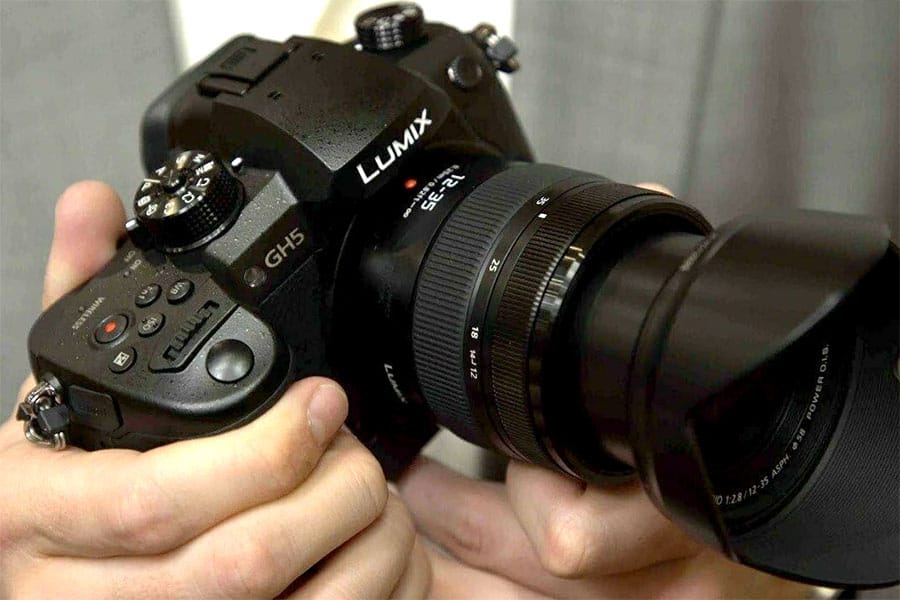
It’s a 24 to 70mm in 35mm equivalent terms, a standard zoom that works well for interior wide-angle shots or closer-up details and portraits.
The wide f-stop means you can keep shooting after dusk or even in poorly lit interiors.
And since it’s native to Panasonic, the optical image stabilization works great.
When combined with their built-in image stabilizer, Panasonic says that an optical stabilized lens can result in a five-stop improvement in low-light photos.
Another option that would make an excellent f/2.8 walk-around lens is the Olympus 12-40mm f/2.8 Pro.
Olympus makes high-quality lenses with stellar optics.
As I can see it, the only downside of choosing an Olympus MFT lens is that there could be compatibility issues with the electronic functions.
All Micro Four Thirds mount lenses will fit your GH5, but the electronic doodads may pose problems.
The biggest issue is sure to be with the optical stabilization, but since this Olympus lens has none, I don’t think it will be an issue.
Extra Small for Maximum Portability - Panasonic Lumix G X Vario PZ 14-42mm f/3.5-5.6 Power Zoom, Power OIS
If you want something that will tuck in your bag for the ultimate travel experience, check out this little Panasonic number.
It’s a 28 to 84mm equivalent lens, but its most vital attribute is its form factor.
It weighs only 95 grams and is only 28 mm long.
These dimensions make this lens smaller than many prime lenses, yet it still features a reasonably versatile zoom range.
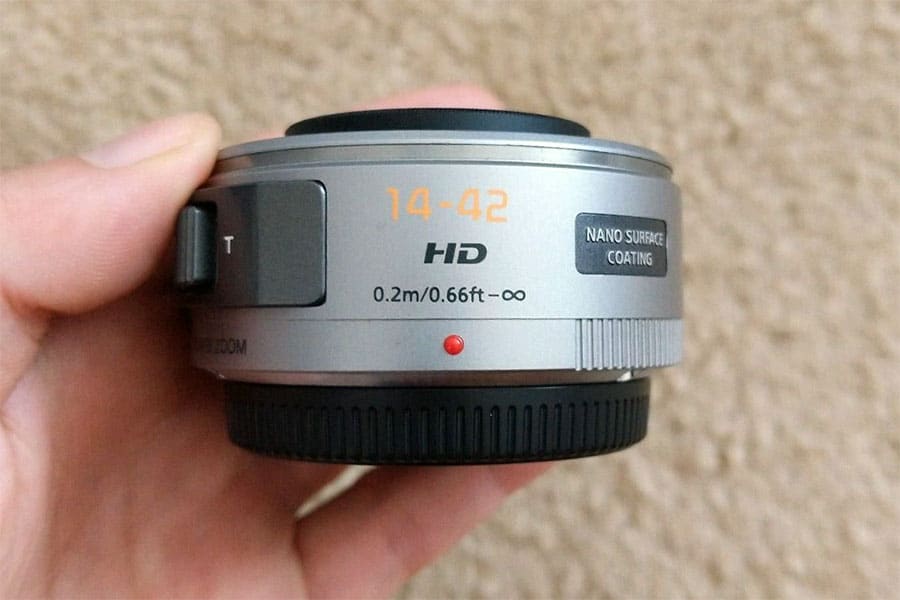
It’s got optical image stabilization and a nano surface coating for low light dispersion.
The aperture isn’t the fastest in the world, but it’s more than adequate for daylight scenic shots.
Best Super Wide-Angle Zoom - Panasonic Lumix G Vario 7-14mm f/4.0
One downfall of the Micro Four Thirds format is that the small sensor size means it is difficult to get a wide-angle lens.
Luckily, Panasonic, Olympus, and a few others have made some amazingly wide zooms available for the mounting system.
The Lumix G Vario 7 to 14mm has 35mm full-frame equivalent focal lengths of 14 to 28 mm, which is pretty wide.
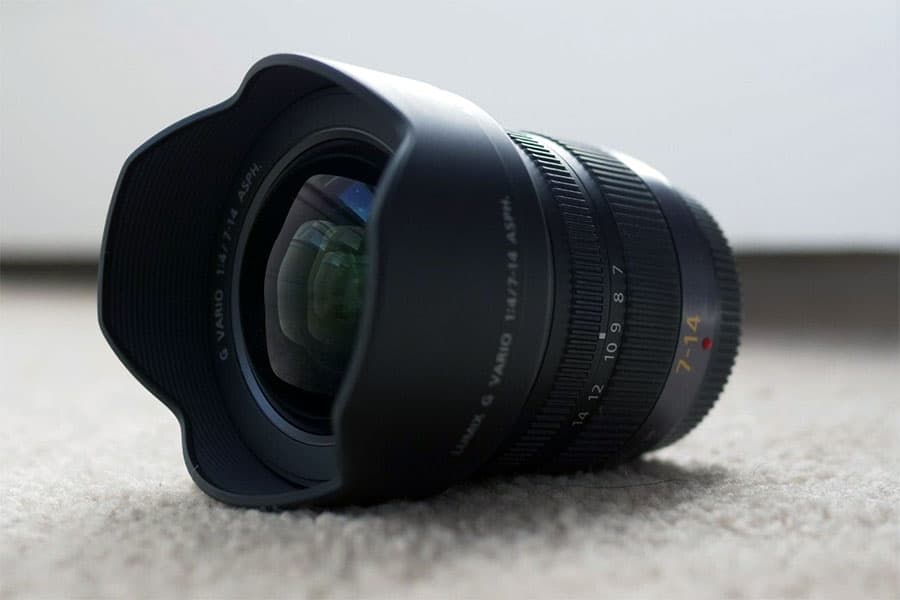
I like having a standard zoom lens like those above, in the 24 to 70mm range, and getting something faster and wider in a prime for low light landscapes.
This is a great place to save a little cash, too, and find something fully manual or even vintage.
But if you are always wishing for more field of view or do a lot of interior shots, this is a stellar lens for that sort of work.
The aperture isn’t extremely fast at f/4.0, but it’s perfectly adequate for architectural or landscape work.
Travel Zoom on a Budget - Panasonic Lumix G Vario 12-60mm f/3.5-5.6
Your budget should play heavily into your choice of a travel lens, and my top pick might have you cringing with its price tag at nearly a grand.
What if I told you that you could get a very similar lens that is smaller and lighter, at about half the price?
Meet the Lumix G Vario 12-60mm. Unlike its Leica-branded sister, this lens doesn’t feature a super-fast aperture.
But for well-lit scenes, you’re going to love the 24 to 120mm 35mm equivalent focal lengths.
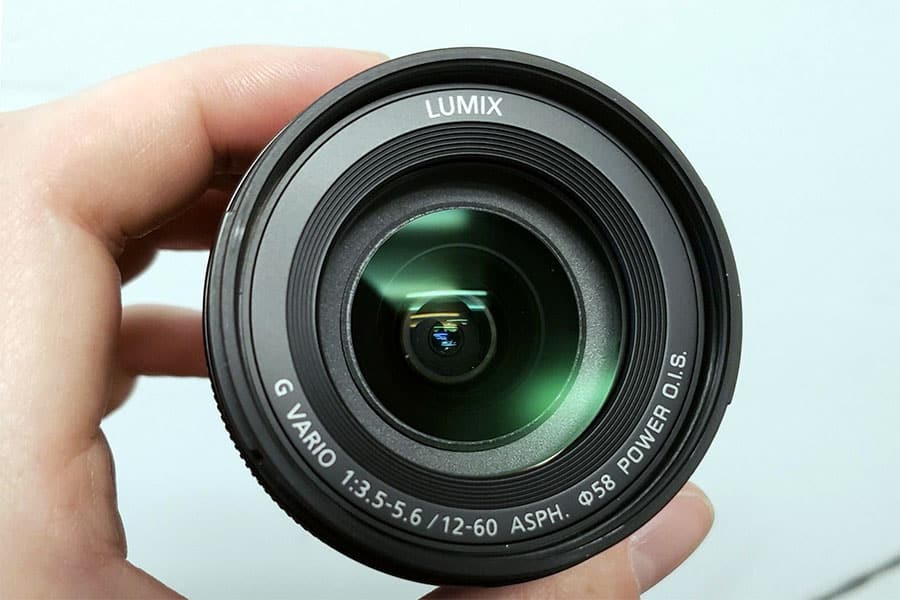
Still not cheap enough?
If you ditch the optical image stabilizer, the Olympus M.Zuiko Digital ED 12-50mm f/3.5-6.3 is another excellent choice. According to Panasonic’s compatibility list, this lens is fully functional on the GH5.
It’s got excellent optics, and it checks all of the boxes while costing even less than the Panasonic version.
Best Super Zoom for Extra Focal Length - Panasonic Lumix G Vario Telephoto Zoom 14-140mm f/3.5-5.6 II
Super zooms are an interesting breed of lens.
They cover an enormous focal length range, in this case, from 14 to 140mm (28 to 280mm in full-frame terms).
But they aren’t very fast, and they usually wind up being fairly heavy.
Having an aperture at f/5.6 at 140mm will require a brightly lit daytime shot; it’s certainly not great for night shooting.
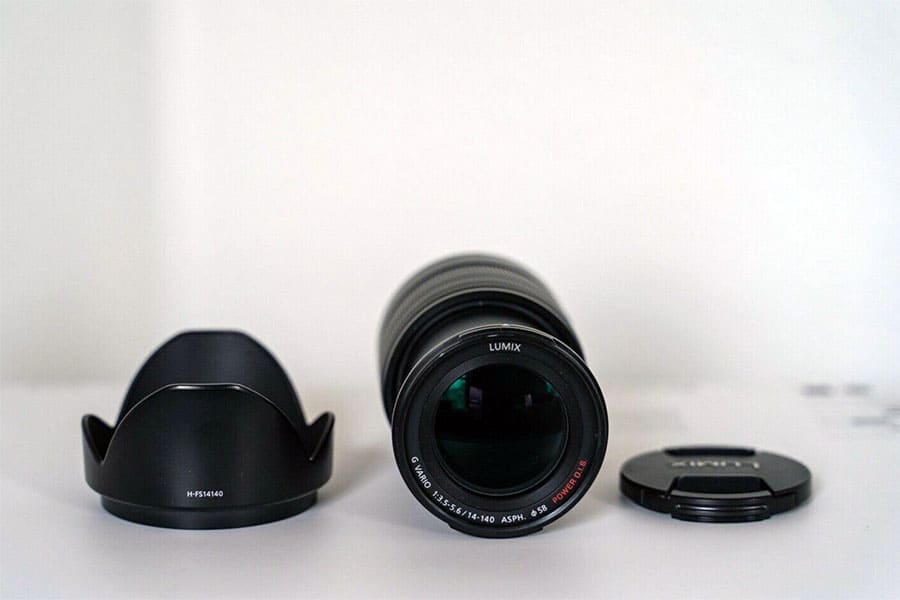
But if you need to have just one lens and want to do everything from wide-angle group shots to sports or closeup wildlife, this lens can do the job.
If you’re considering a lens like this, it’s well worth spending the extra money for the native Panasonic lens.
With its built-in OIS, it can help reduce hand shake. That will come in handy when hand-holding zoomed-in shots at 10x.
Tiny Prime at a Great Value - Panasonic Lumix G II 14mm f/2.5
When traveling, there are times that I want to pack light.
The GH5 is already a small camera, especially when compared to the full-frame bodies of yesteryear.
One of the best ways I know of to keep it small is to find a tiny, inexpensive prime lens that I love using.
This Lumix G II 14mm fits the bill nicely. It’s what they call a pancake lens due to its super slim profile. It looks a bit funny on your camera, but it’s handy to have for walking around.
Many other lenses fit these criteria, and if you’re interested in using a prime lens, you should look into finding a second-hand manual lens.
You can pick up adapter tubes for pretty much any mount, which means you can get some great values on quality optics if you look around.
Super Fast and Wide Prime–Voigtlander Nokton 10.5mm f/0.95
Voigtlander makes the fastest lenses for MFT that you can find anywhere.
At f/0.95, these lenses are expensive, but they are tough to beat.
The 10.5mm equates to a 21mm full-frame lens, which fits nicely for scenics, interiors, or expansive landscapes.
It is well-built with an all-metal barrel, and it’s a joy to use. This lens is fully manual, though, so be ready to use the focus peeping settings on the GH5 to master manual focus.
Another great fully manual lens worth looking at is the Rokinon 12mm f/2.0.
This lens is a quarter of the cost of the Voigtlander, and while it’s nowhere near as fast and not quite as wide, it is a very capable piece of glass for a few hundred dollars.
Rokinons have impressive optics for their price point.
If you don’t want to go retro with a fully-manual lens, consider looking at the Panasonic Lumix G Leica DG Summilux Professional 12mm f/1.4.
This beautiful lens has an excellent wide field of view and has autofocus and electronic aperture controls.
Travel Photography With the GH5: Guide and FAQ
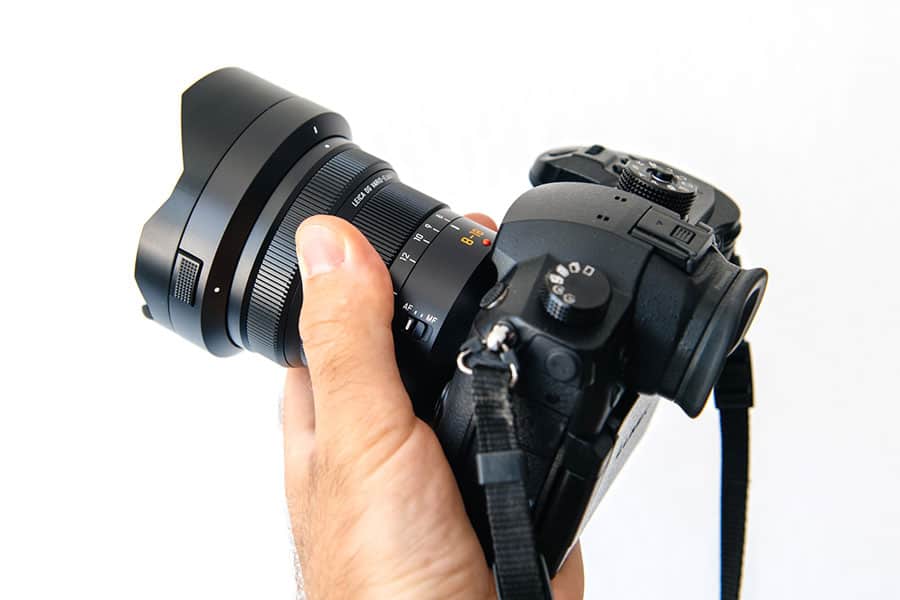
How Do You Choose a Travel Lens?
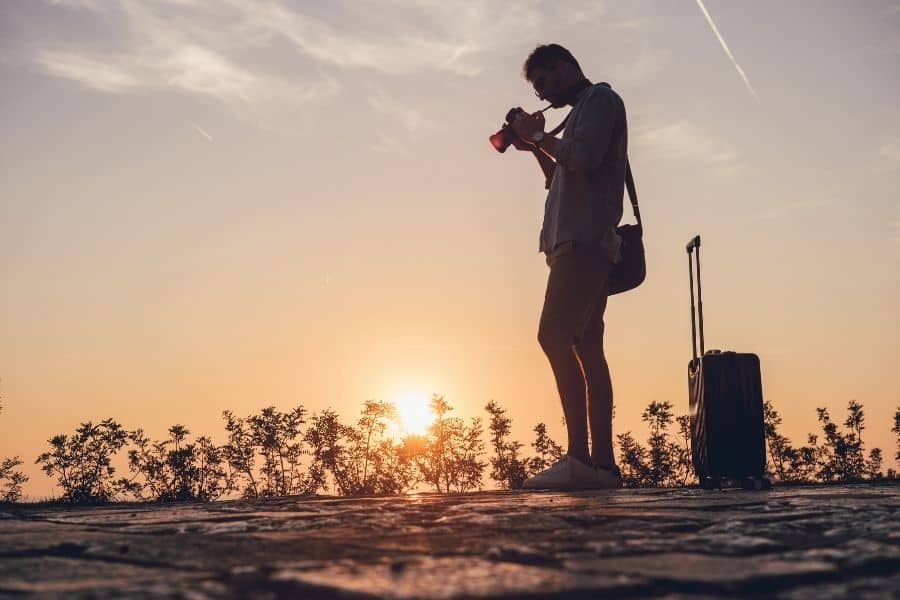
One of the toughest parts about finding the right lens for your adventures is deciding exactly how you want to adventure.
The term “travel photography” means different things to different people.
For some, it may mean taking postcard-perfect pictures of destinations, including the people they meet along the way.
For others, they may be traveling, but they shoot wildlife and scenes from great distances.
Others may be traveling on foot or bicycle and need the smallest and lightest gear they can get by with.
Another consideration may be safety–do you want to take your top-dollar lens into the favelas of Rio?
Maybe not.
With all of this in mind, you can see that no one lens could make everyone happy.
To pick the right lens for your purposes, you’ll need to find the right compromise between the following factors.
Zoom range/focal lengths for maximum versitility
Fastest aperture for low light shooting
Physical size and weight for carrying around in your bag all the time
Cost appropriate to your budget
Most of these factors are closely interrelated.
For example, if you need a faster aperture, it will be physically bigger, heavier, and more expensive.
Focal Lengths
The focal length is related to how close you can get to your subjects and what type of subjects you are shooting.
Landscape photographers shoot in wide angles to fill the frame with scenic vistas.
On the other end of the spectrum, wildlife photographers are far away from relatively small subjects, so they need the longest telephoto lenses they can easily carry and can afford.
In between the two is the everyday street, portrait, or snapshot photographer, who needs neither very wide frames nor very tight zooms.
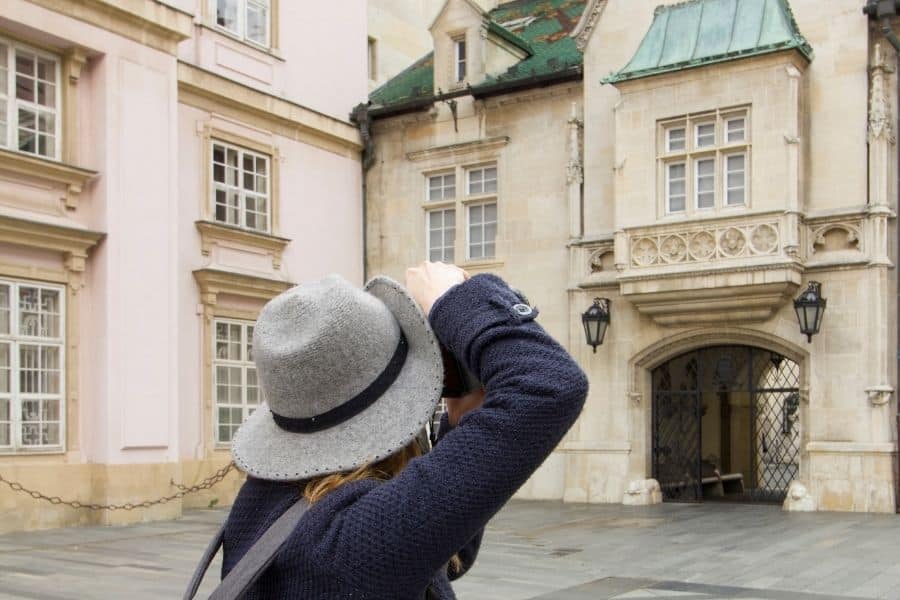
Travel photography is tough to pin down on that scale.
By the very definition, travel photography means you’re going to new places and sharing what makes that place unique.
Maybe that particular thing is wide-angle scenics, or maybe it’s the tiny endangered butterflies that only live in that one place. More than likely, it’s both.
So what do you choose for a lens?
One solution is to find an all in one zoom lens that will shoot everything, from wide-angle to telephoto.
There are many such lenses on the market, but you have to give up a few things to get this capability.
These lenses never have fixed apertures, so as you zoom in, you lose what little low-light capabilities you had.
Depending on how and where you shoot, that might be okay with you.
Another solution is to carry around more than one lens.
This is fine if you’re in a situation where you can keep all your gear organized and safe.
If you’re traveling by car, for example, you can lock all your camera bags in the trunk and take as much stuff as you want.
In that case, take your whole kit!
Don’t forget a sturdy tripod, and fast wide-angle, and a really good telephoto lens.
But if you’re traveling on foot, you will have to condense that collection down.
It might be as simple as keeping your favorite lens on the camera and taking a second one for good luck.
Or it might require shopping for a one size fits all solution that you only use when traveling.
I think of a travel lens as something small and light that can do pretty much anything I ask of it. I focus mostly on scenics and wide-angles while traveling, so I’m not too fussy with getting a very long telephoto lens.
I want something small, in the 24 to 70 millimeter (35 mm equivalent) focal length range, and I prefer it to have a reasonably wide aperture.
An f/2.8 lens would be ideal, but these are generally too heavy and too expensive to lug around everywhere.
My solution is simple. I usually carry a very small and wide prime on my camera at all times.
It’s something between a 20 and a 35mm equivalent, which means a 10 to 17mm on the GH5.
I want to get it as fast as I can afford while keeping the package lightweight.
Then, I also have my 24-70mm zoom tucked away in my bag.
I don’t carry it everywhere, so it might stay in the car or the hotel room’s safe.
With this setup, I can use the prime while walking around doing touristy things.
It’s small and light, and it fits nicely in a non-descript shoulder bag.
I learned a long time ago that the bigger and heavier a camera is, the less likely I am to take it everywhere.
Keeping my camera light and portable means I will use it more often.
But, when I’m going on a hike that I know will be good, I’ll take my zoom lens with me too.
It also tucks away safely in my shoulder bag; it just adds a pound or two. If I want to shoot a little wider or a little tighter, this gives me a way to do it.
Apertures
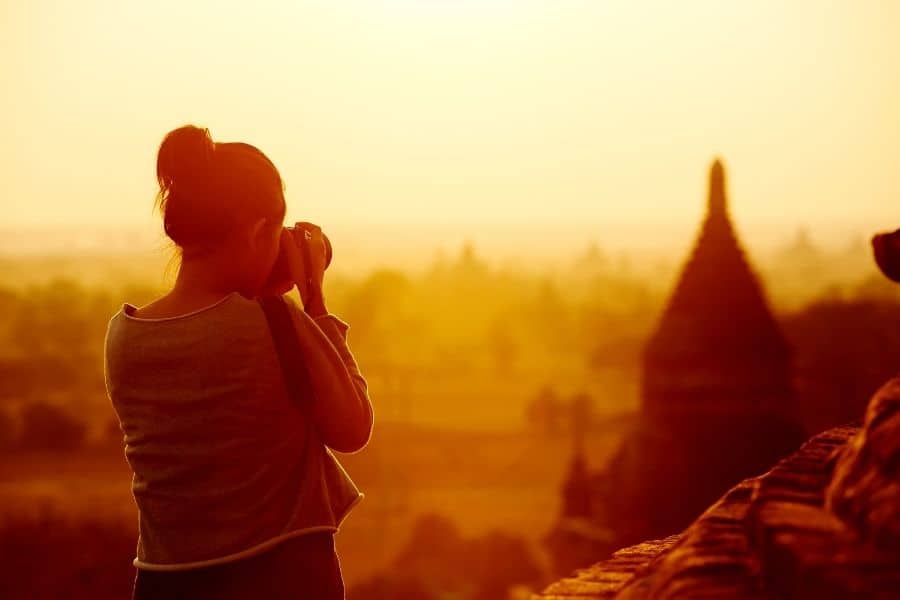
Wide apertures provide two benefits to the photographer.
They provide shallow depths of field, which is handy for portraits but not too useful for travel photography.
They also provide fast performance in low light.
If you want to shoot during the golden hour or during the blue hour, when the lighting is more mellow, a fast lens gives you that option.
If it’s fast and wide, you can continue shooting slightly after dark while hand-holding the camera.
If you add a lightweight travel tripod, you can shoot night scenes as well.
With a fast lens and with the GH5’s high ISO settings, you can get some stellar night sky or city light shots.
Night photography is one of my favorite things, so I’m always looking for ways to make it happen.
If the lens isn’t an f/4.0 or faster, it’s generally a non-starter for me. Of course, your mileage may vary.
Size and Weight
The physical size and the weight of a lens don’t play much role in your calculations for other types of photography.
If you’re working out of the trunk of your car and can drive right up to the shooting location, you can have the biggest and heaviest gear with no problems.
But many of us are walking around the city or hiking up the mountain all day long.
I’m not going to take my trusty old Canon 24-70mm f/2.8L on that trip.
The thing weighs more than four pounds; I love that lens, but it’s a massive chunk of glass that makes my back ache.
The size and weight of a lens are linked to how fast the aperture is.
The faster the lens, the larger the glass elements inside it, and the larger and heavier it will be.
Zoom lenses will always be larger than their prime counterparts, and a zoom lens with a large aperture will be the largest and heaviest of them all.
Having the best gear doesn’t always mean having the biggest and fastest.
The best gear is the gear you use. For a long hike, I’m much happier toting a super-fast wide-angle prime. It weighs a fraction of the weight, and it does what I want it to.
Best of all, it weighs a few ounces and is very small, so it fits in a small bag easily.
Cost
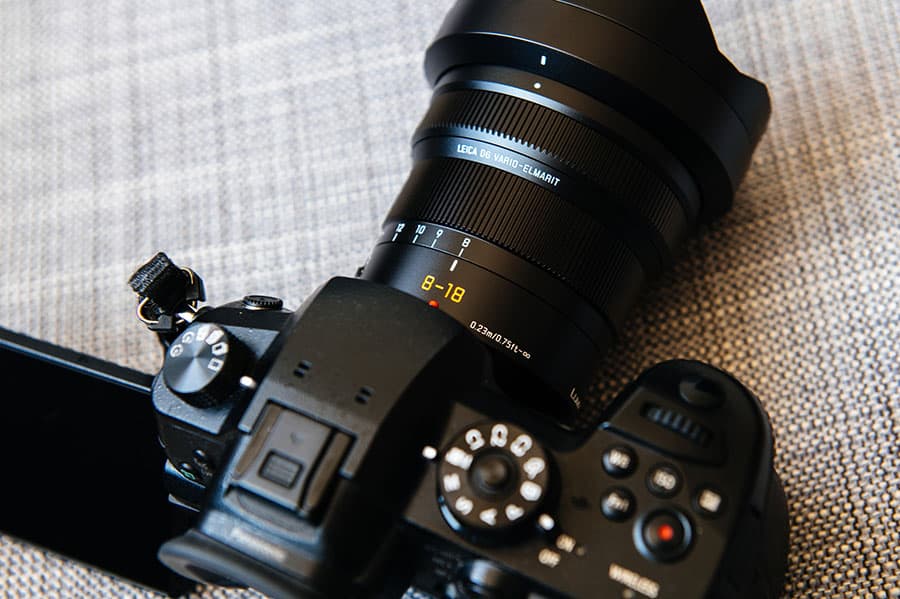
All of these other factors have to be weighed against your budget.
Generally, the most budget limiting factor is the aperture. Fast lenses are expensive, so you pick the focal length you need, and then you figure out how wide an aperture you can afford. If you’re looking to pick up a grab-and-go travel photo lens, you might be okay with saving the extra money and getting something not quite as fast and not quite as bulky.
Remember, the cost is also very closely related to the build quality.
More expensive lenses are more likely to have metal bodies and better weather-sealing.
These are important to have because a travel lens will inevitably get banged around a little.
These features also make them heavier than their less expensive kit-lens cousins.
Adapter Tubes
One of the neatest things about shooting in Macro Four Thirds is that the format allows you to mount nearly any format lens to the body of your GH5.
The only limiting factor is the amount of automation you require.
Most adapter tubes are simple bits of metal that make the treads match between the lens and the camera.
They are built to the exact specifications between the cameras so that the lens optics project the image on your sensor correctly.
Many photographers shoot with older glass that they love or that they pick up on eBay for cheap.
You can find some fantastic deals at second-hand camera shops around the country on fully manual lenses that have stunning quality.
You can pick any mount you like as long as you can find the right adapter tube.
If you want autofocus, optical image stabilization, or electronic aperture controls to work, you need an adapter tube with the electrical connections built-in.
That’s more complex, so it will cost significantly more money.
But if you’ve already invested heavily in a system like the Canon EF-mount or Nikon F-mount, it is well worth the money to use your full collection of lenses.
Metabones is the biggest name in these types of adapter tubes.
Fully-Automatic Versus Fully-Manual Lenses
There are a few reasons to shoot with fully manual glass. Some shooters like the vintage look and feel of old-school lenses. This is especially true with the high dollar stuff, like Leica or Zeiss optics built for rangefinder cameras. These work great on the GH5 and provide a novel and fun shooting experience to boot.
Some photographers find that this boosts their creativity.
Another reason to go fully manual is to save money.
You can find great deals on used lenses, or you can find new companies making manual lenses with excellent optics.
One example is the Voigtlander lenses, which are incredibly fast at f/0.95. Discount brand lenses also do a great job. For example,
I love my Rokinon 12mm f/1.4. It’s fast, clear, and wide. When shooting landscapes or scenics, I don’t miss the autofocus, stabilization, or electronic aperture at all.
Multi-Taskers Rule the Day
One final note about picking an excellent travel lens–the more things a lens can do for you, the more valuable it is.
I seldom look at picking a lens in terms of one mission.
I might launch into a spending spree to get a great travel lens, but I’ll land on the one that can do other things well too.
Will I use it around the studio at all?
Can I use it for my night photography or street photos?
Some photographers have a lens that is their travel lens, and a dozen others that each have their own job.
But I try to get by with a small number of high-quality options.
The more functions my lens can do for me, the better.
I guess this makes me a photography minimalist, but I’m really just a professional on a budget.
Conclusion
Travel photography is a hard genre to pin-down and define because it is a different sort of photography for every traveler.
For some, they may be looking to take daytime snapshots from a distance.
Others may want to spend a lot of time setting up long exposure low-light images.
The lenses each photographer chooses are going to be completely different.
What do you like to travel with, and what sort of shots do you take?
Let me know in the comments below.

